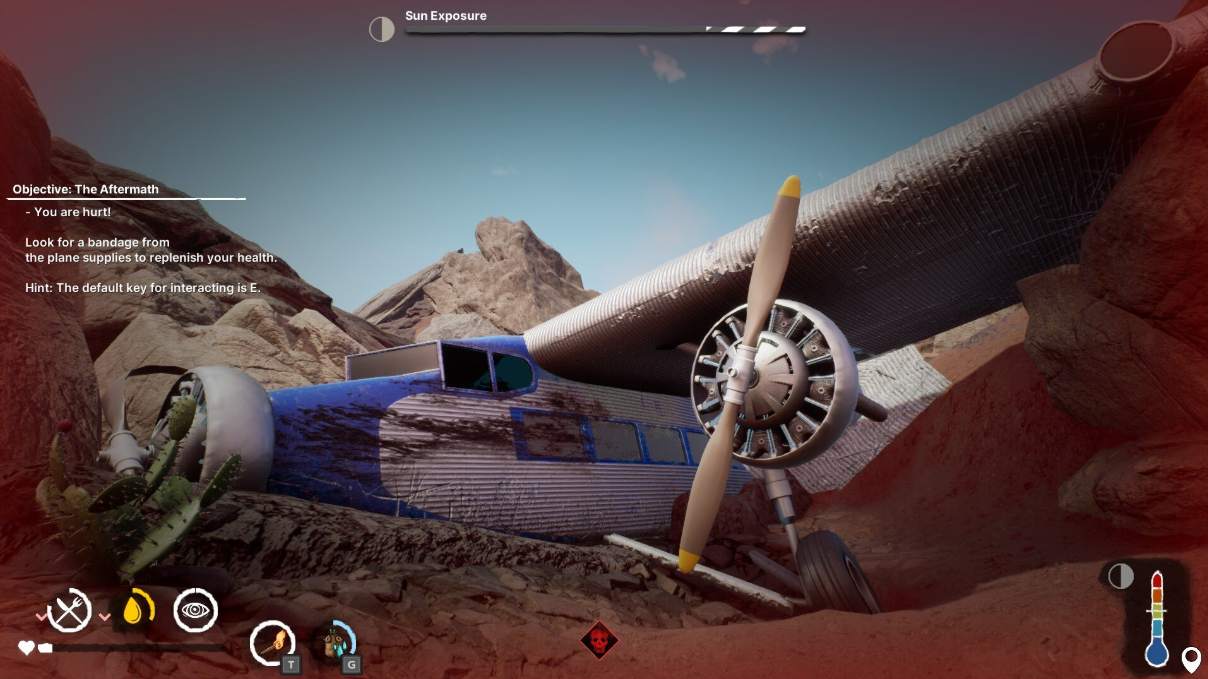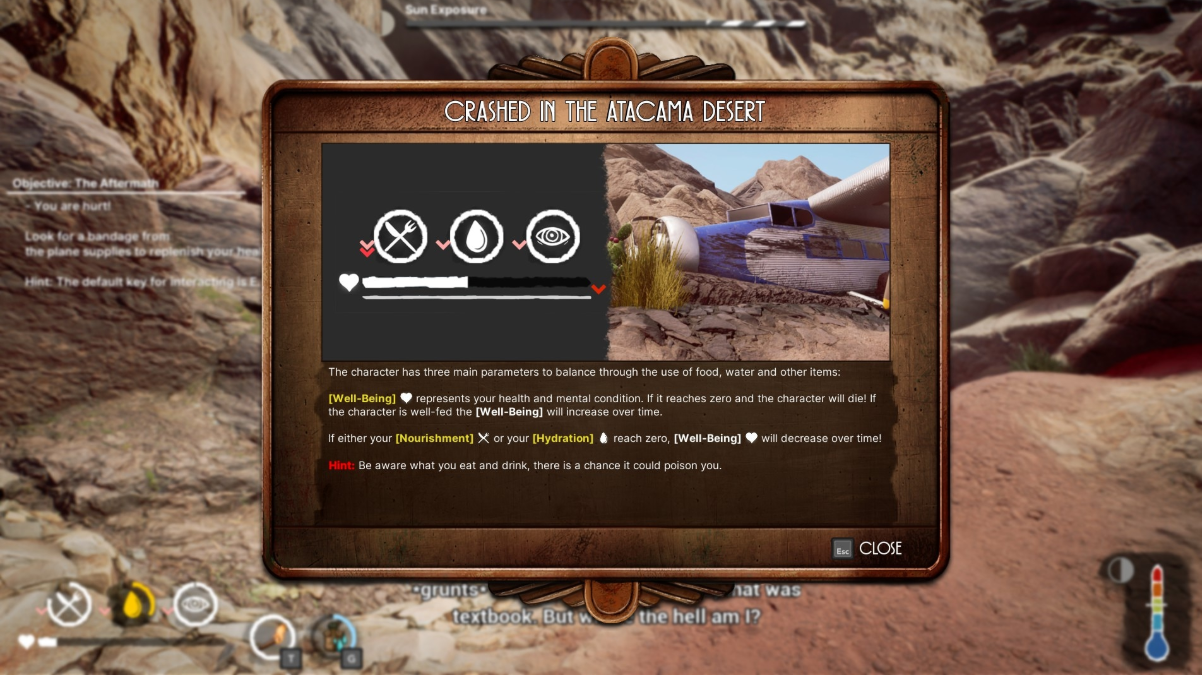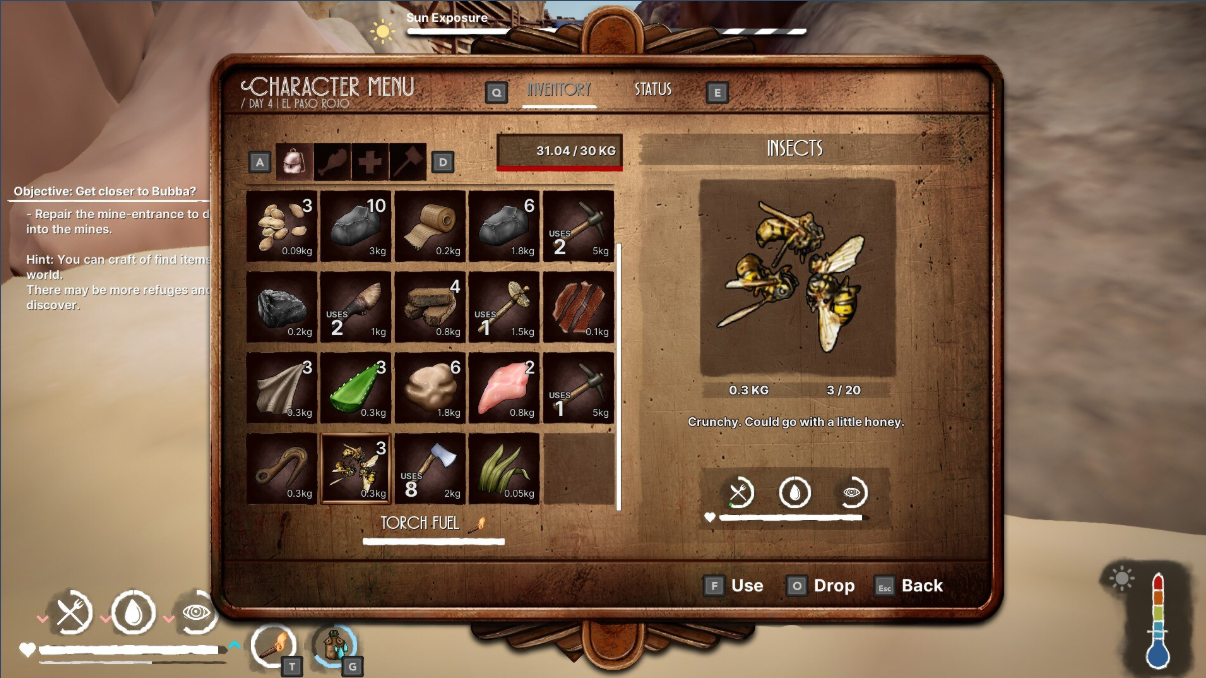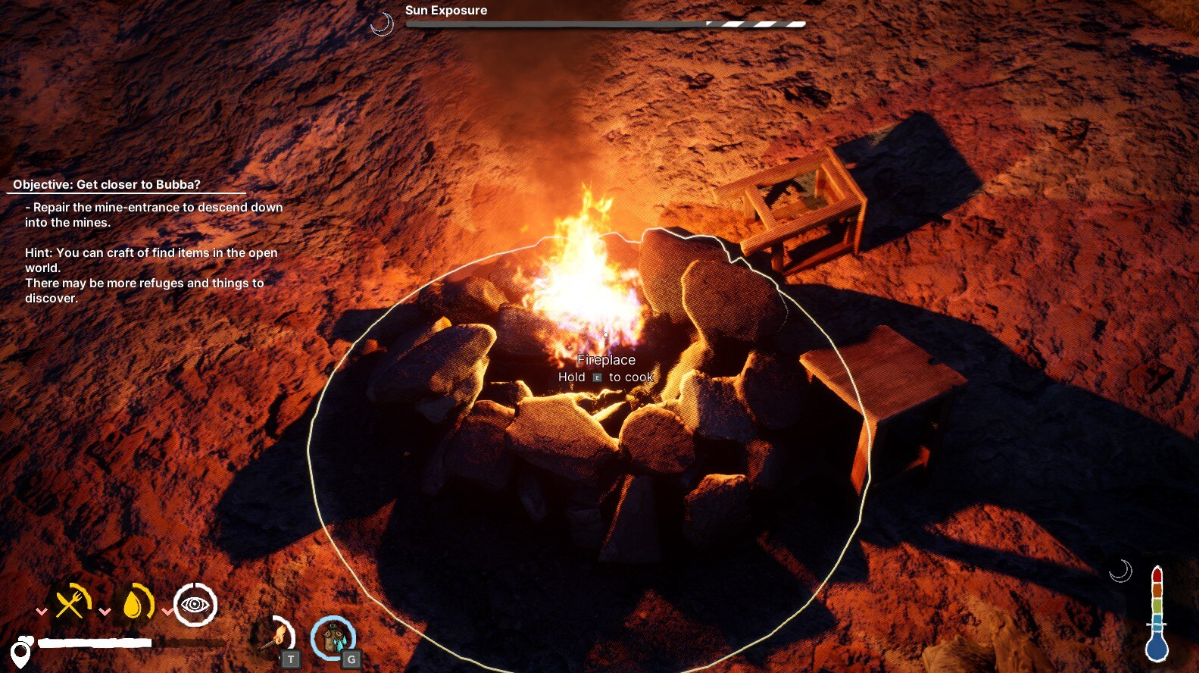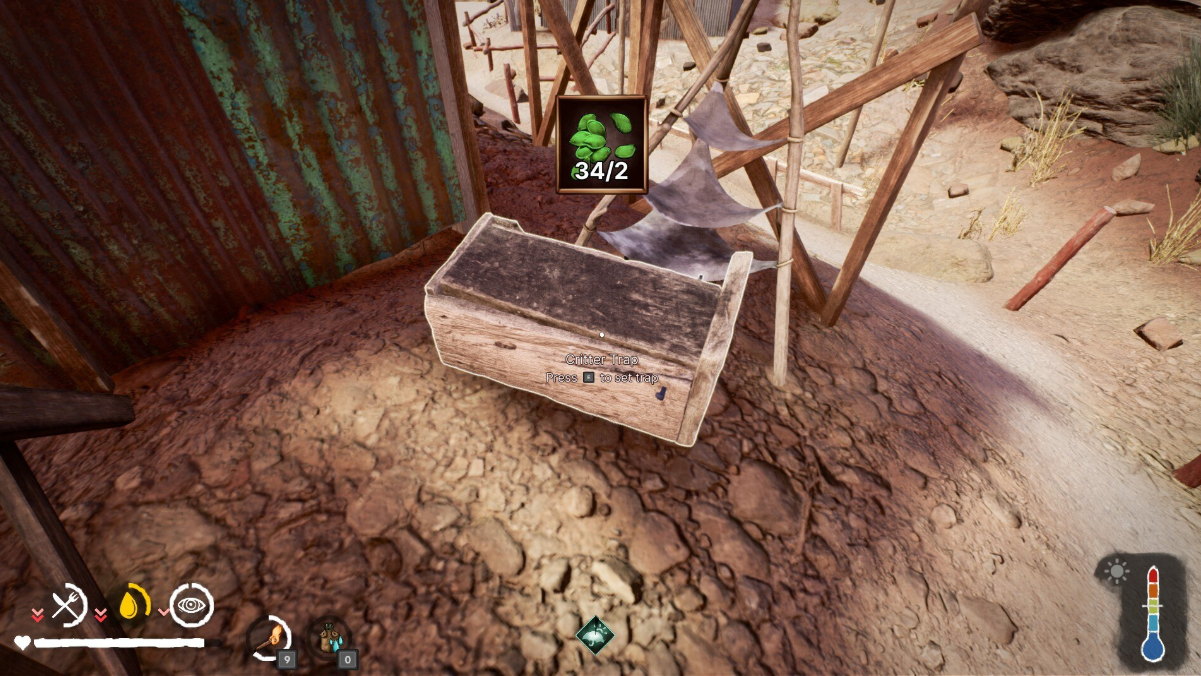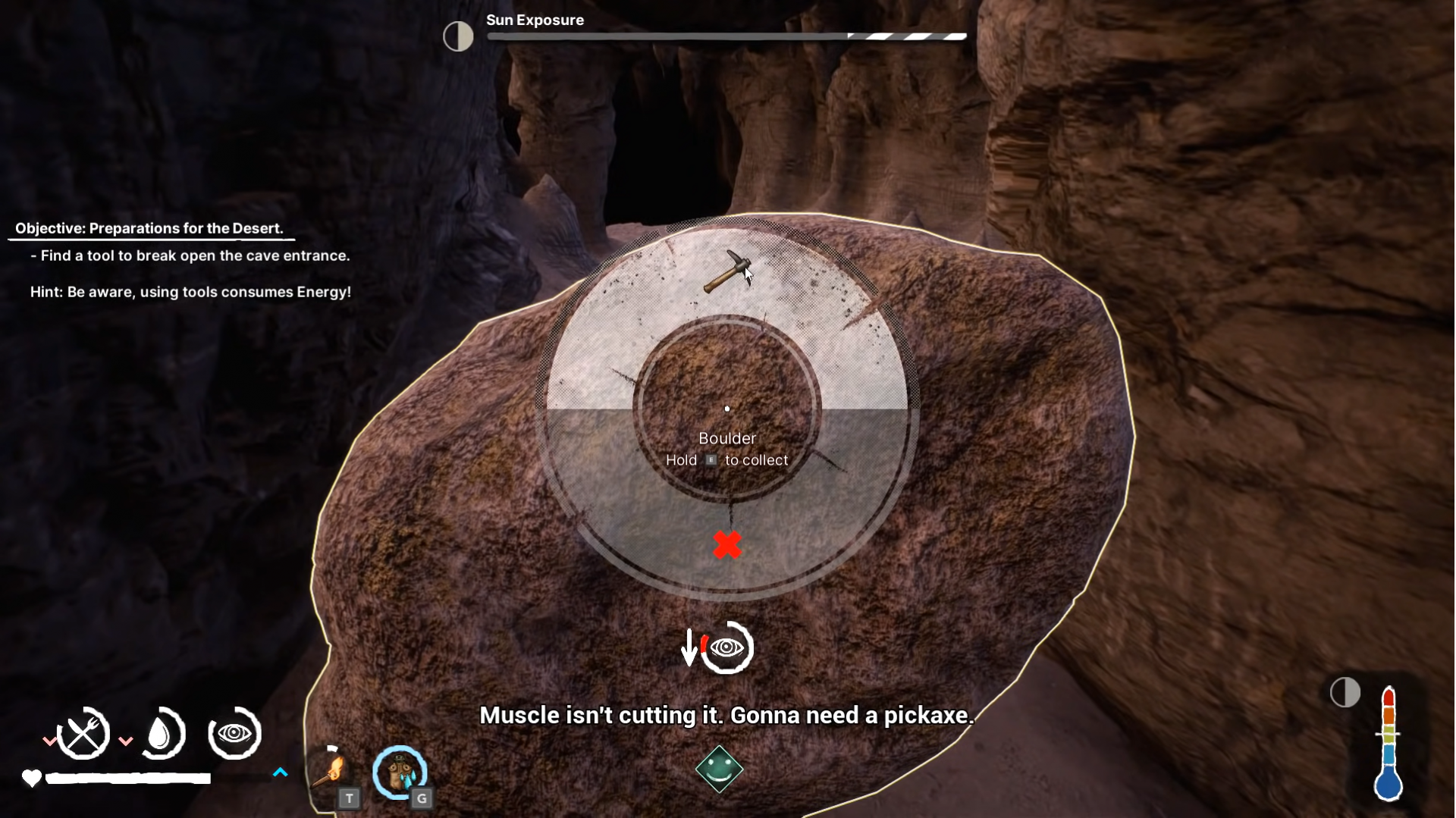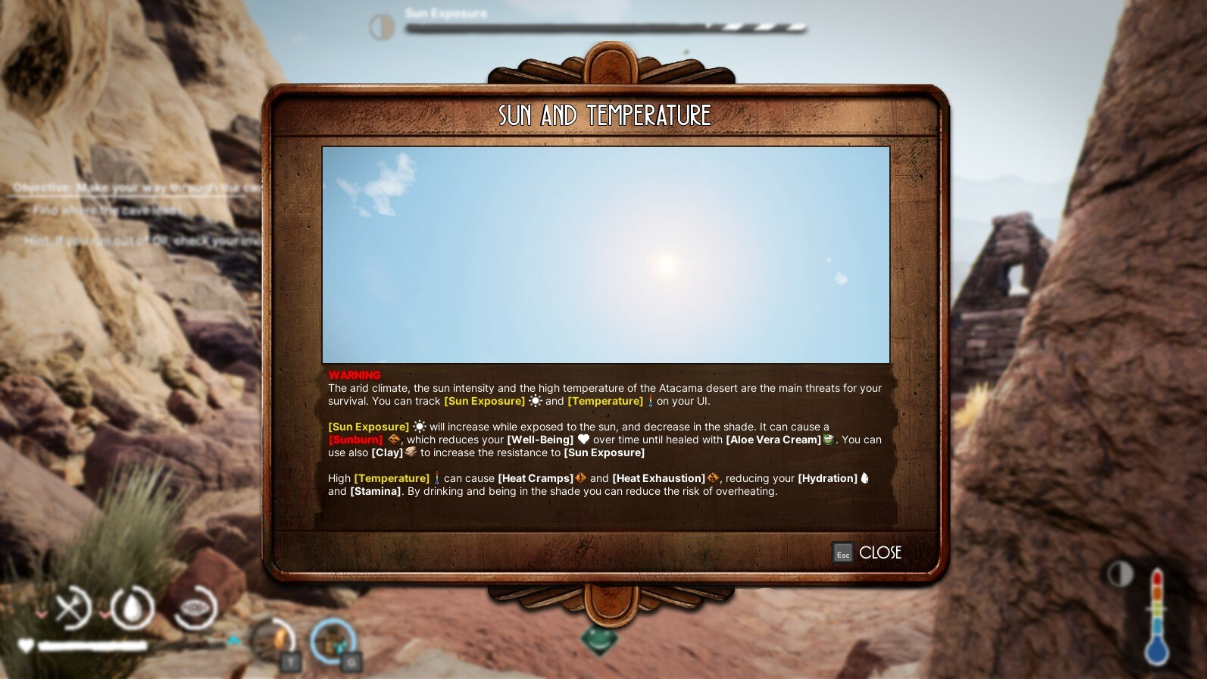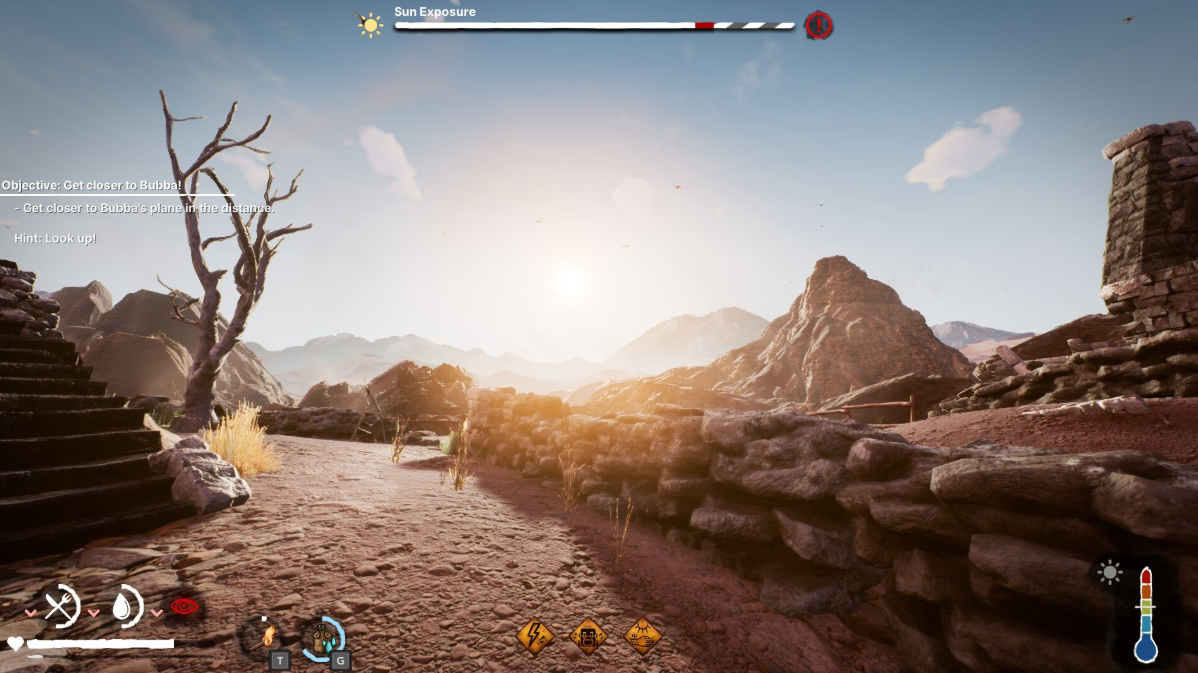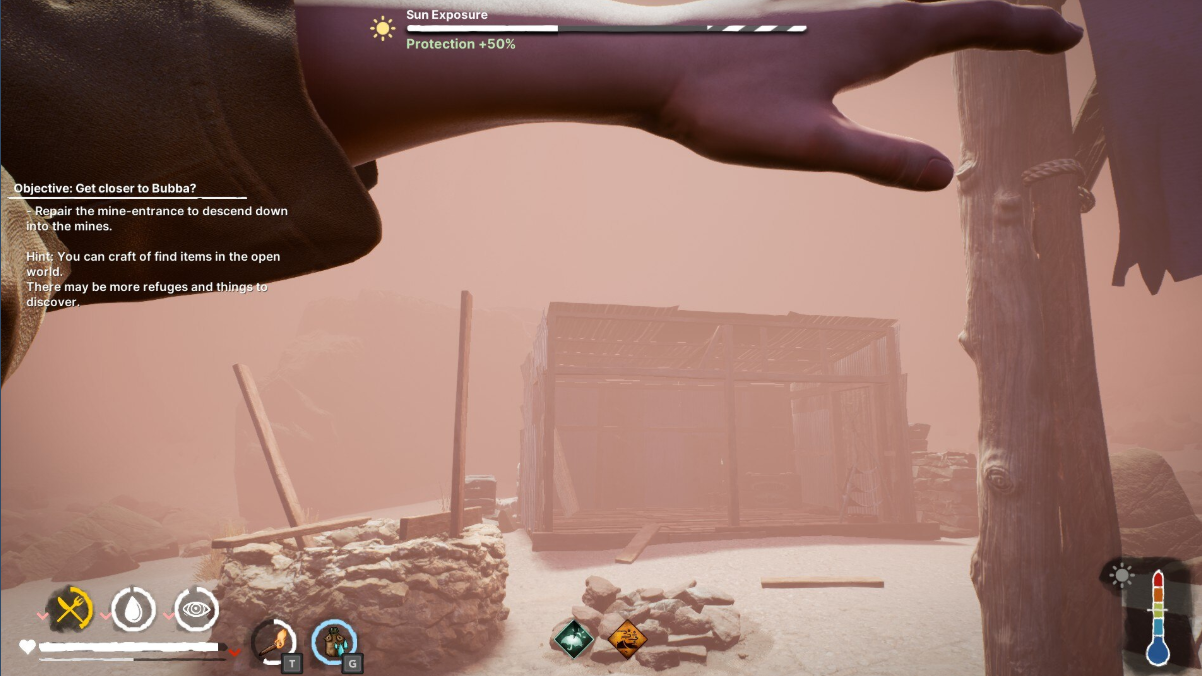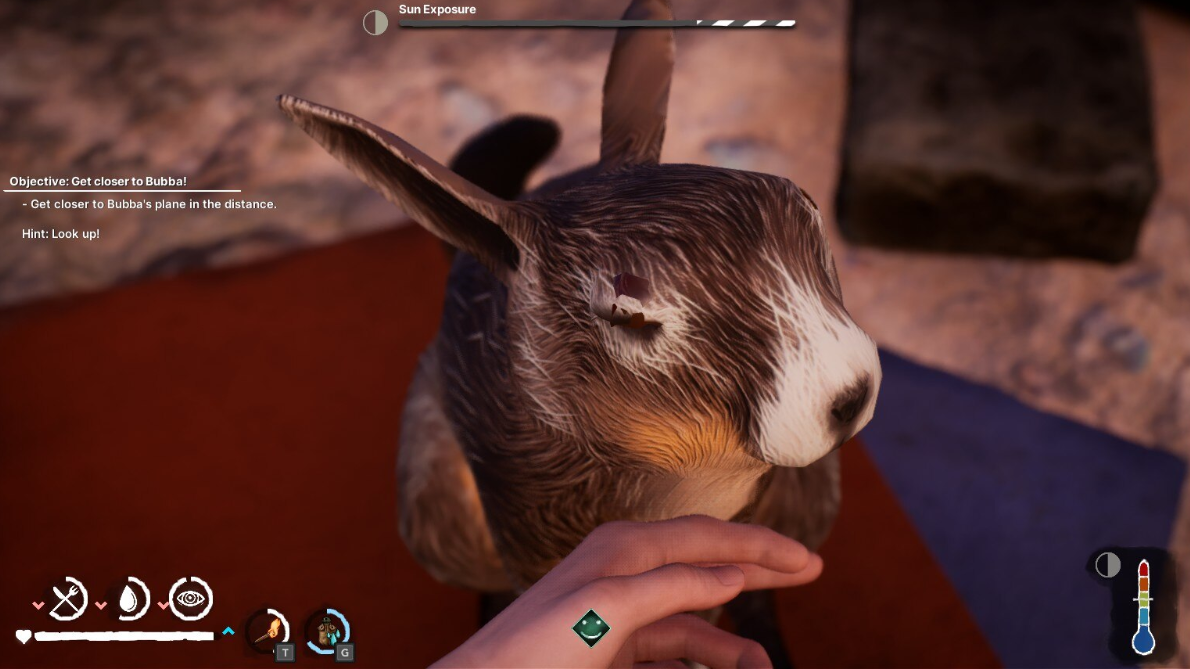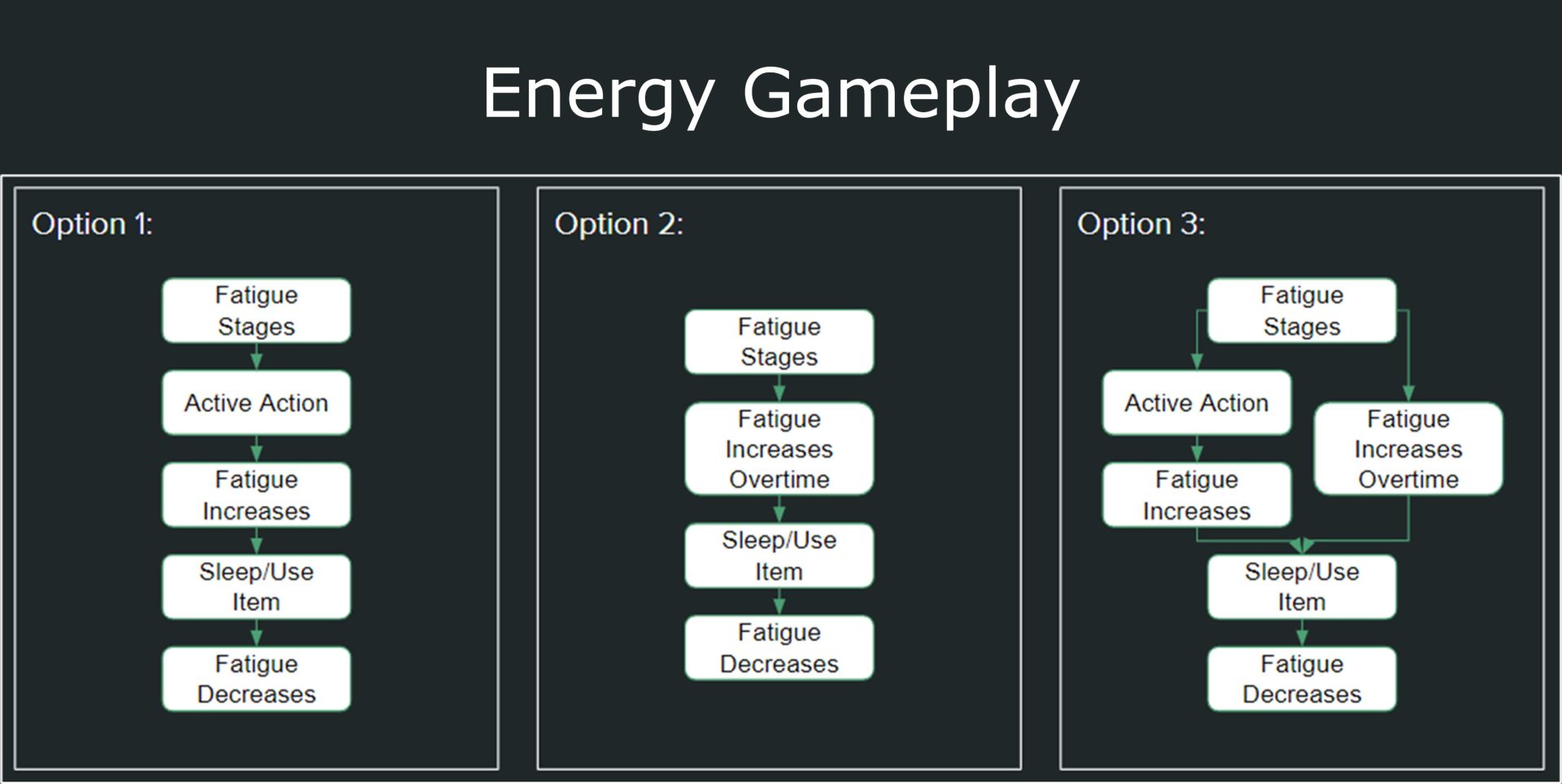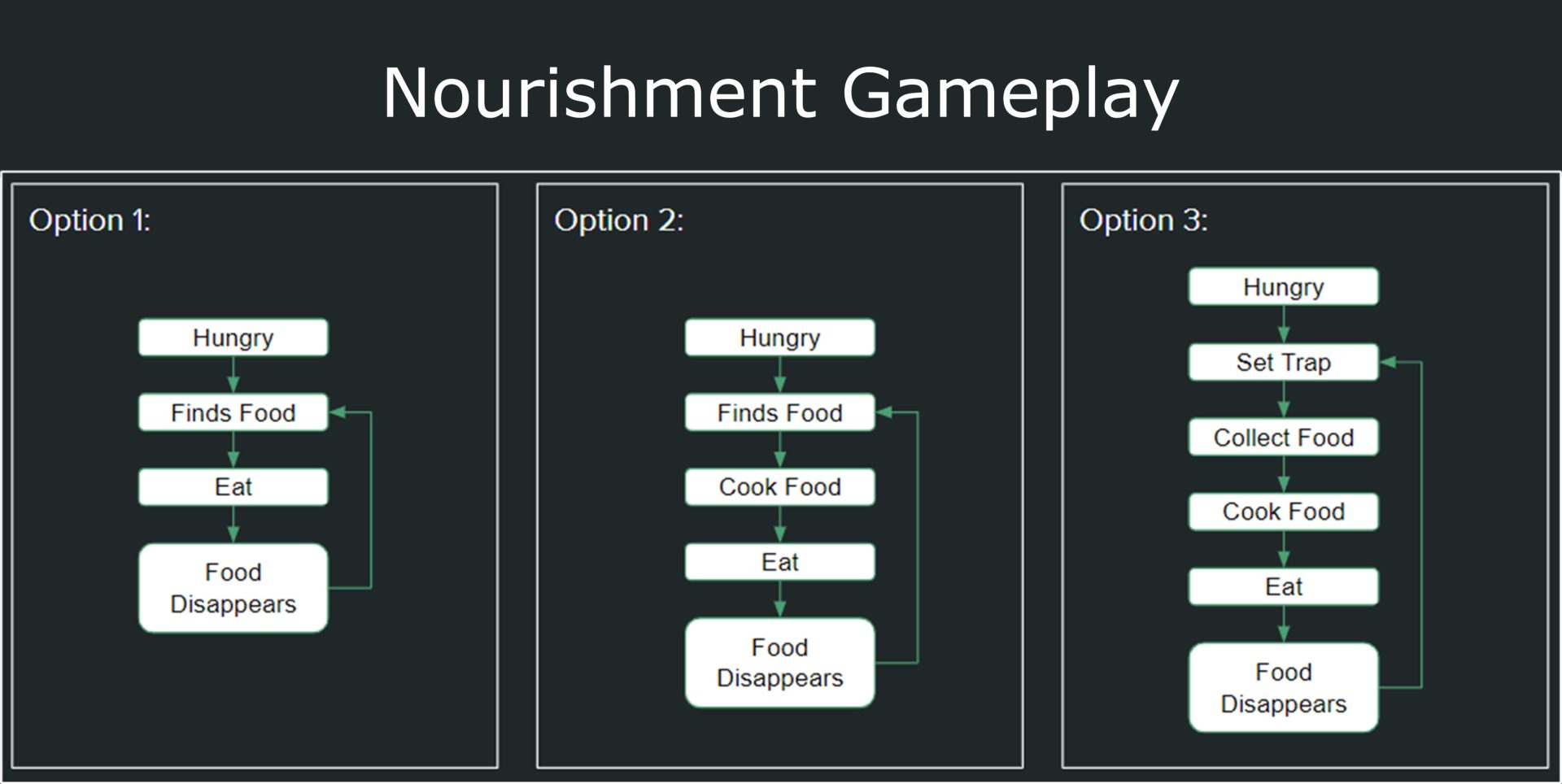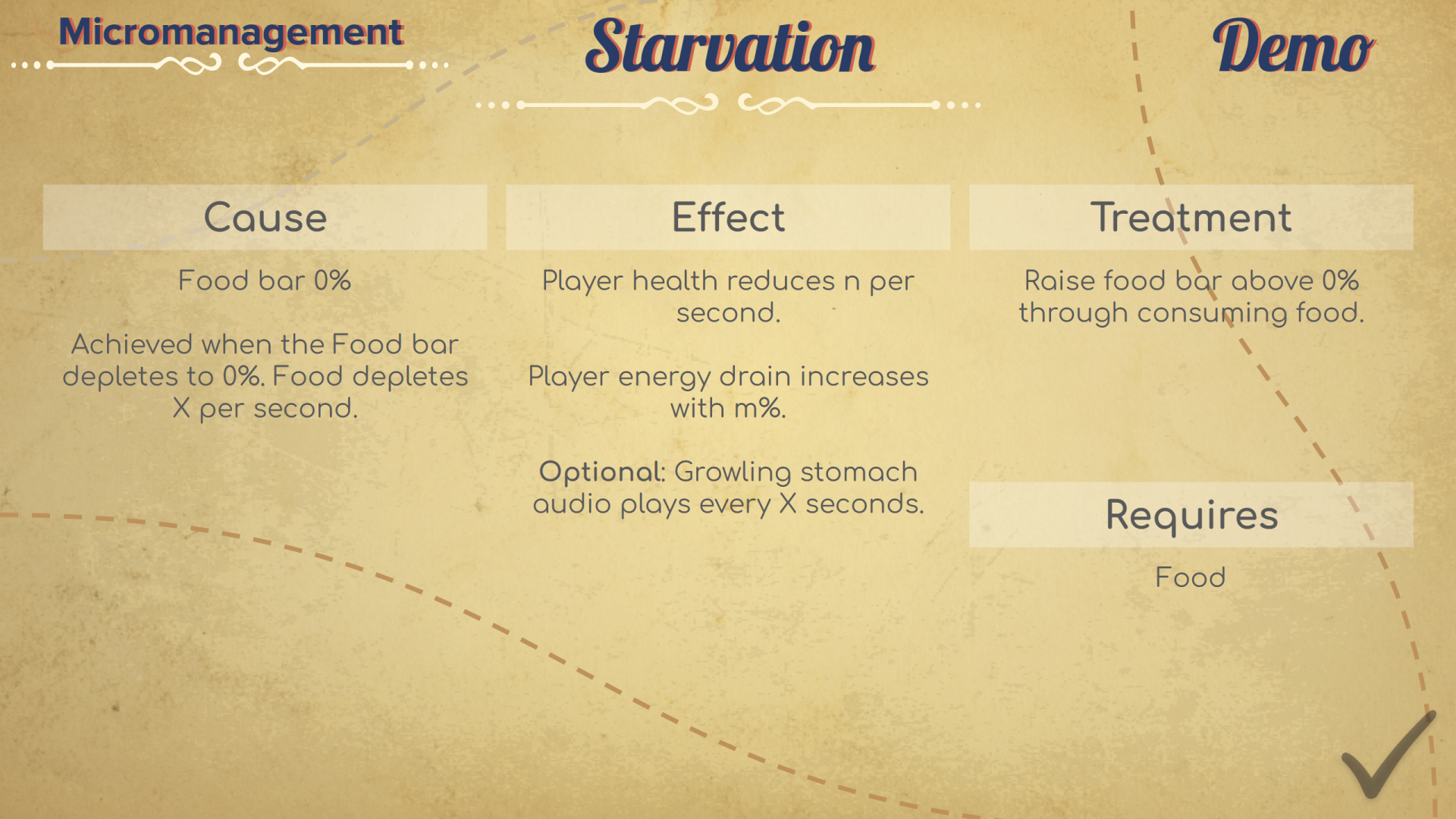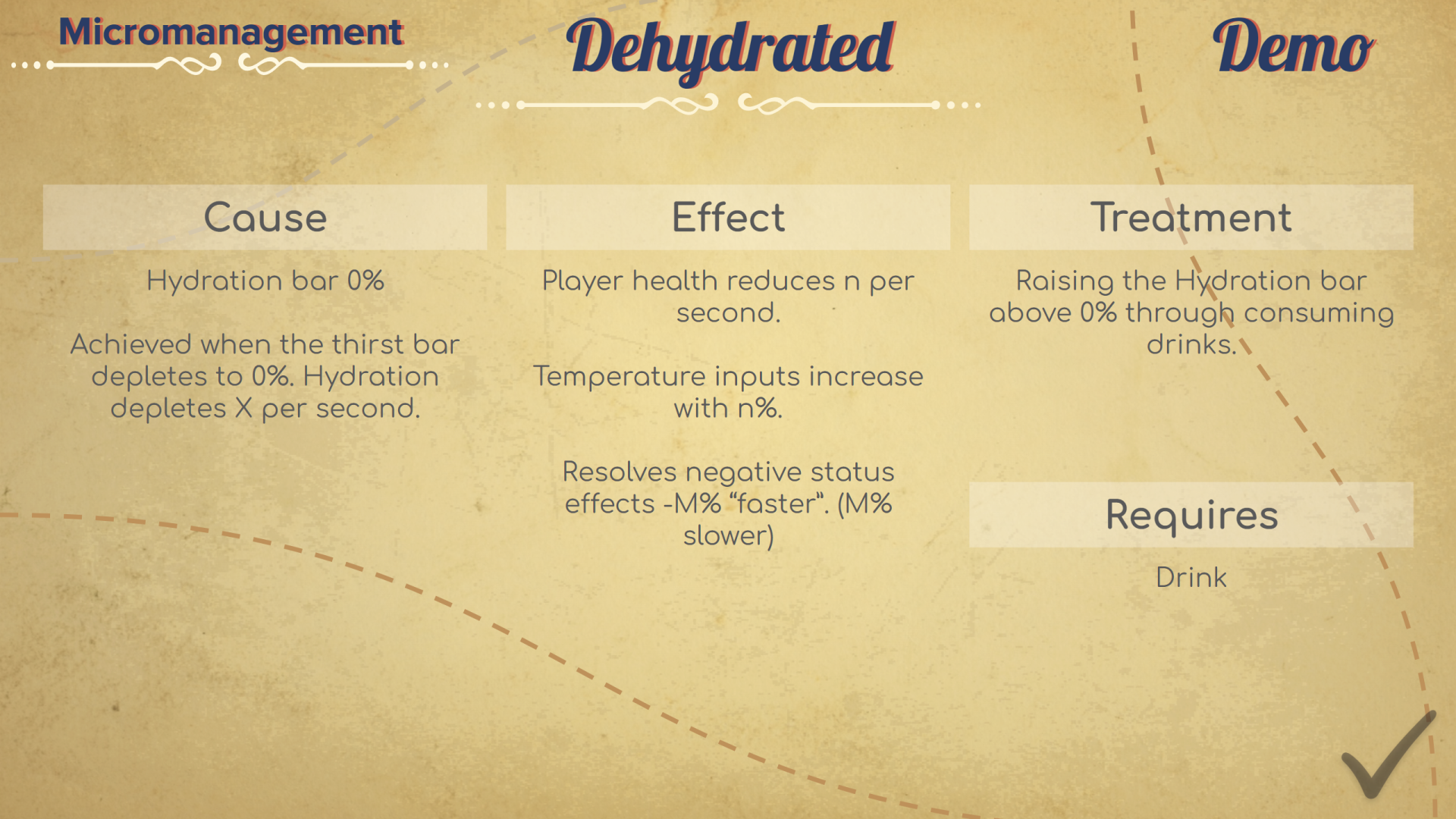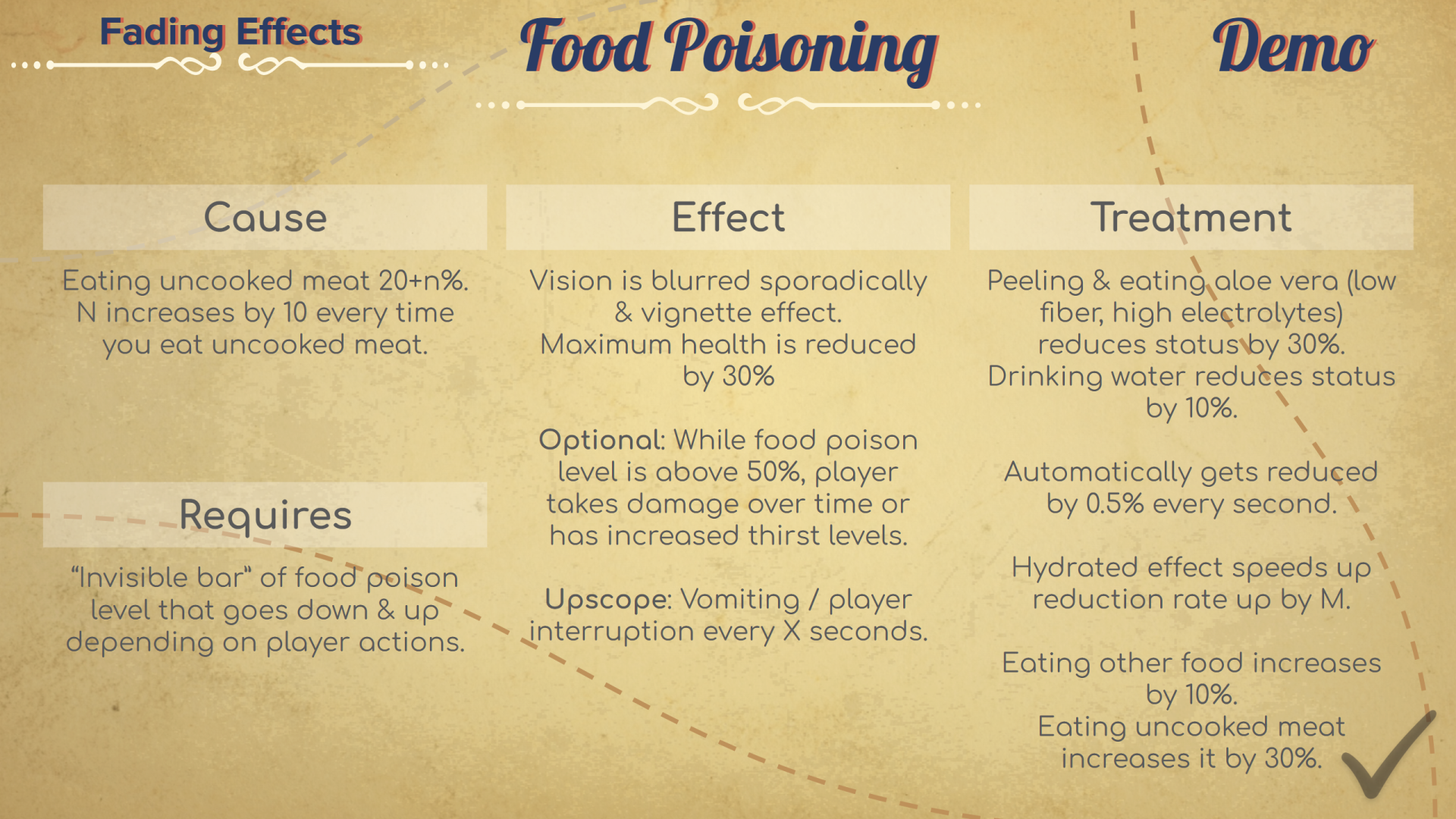Arid
Arid is a gritty, exploration-survival experience that challenges players in surviving the most arid place in the world. By using your skills and adaptation, you must face the loneliness, the extreme temperatures, and mysteries of the Atacama Desert.
Project Information
Genre: First Person Open-World Survival
Engine: Unreal Engine 4
Duration: 32 weeks
Team Size: 22
Primary Role: System Design
Secondary Role: QA
Utilized Tools:
G-Suite
Miro
Jira
Perforce
Unreal Engine 4
Machinations
G-Suite
Miro
Jira
Perforce
Unreal Engine 4
Machinations
Achievements
Arid is the first Steam released project that I’ve worked on.
It is also the very first title, which I contributed to, that has been nominated for the Rookies Finalist 2021, for the GDWC Hobby Finalist 2021 and won the Dutch Game Award for best student game 2021.
I’d contributed to the development of Arid, while working 100% remote.
Responsibilities / Contributions
Conceptualize, research, iterate and balance the Micromanagement Gameplay and Mechanics.
Engaging pro-actively with the Arid community through Discord and social media.
Continuous Quality Assurance testing, with internal and external people.
Micromanagement Prototype
Micromanagement Design
Throughout the whole development of Arid, I was primarily responsible for the micromanagement within the game.
It all started with research into the different behavior types micromanagement can create and how our reference games were able to create those behaviors. Based on that research and our game concept, we established our main parameters; Well-being, Nourishment, Hydration, Energy and Sun Exposure.
Each attribute had a set of values; Start-, Maximum-, Minimum- and Change per Second values. Based on our external playtest results, I balanced these values to achieve our desired player behavior and gameplay experience.
Each attribute had a set of values; Start-, Maximum-, Minimum- and Change per Second values. Based on our external playtest results, I balanced these values to achieve our desired player behavior and gameplay experience.
Micromanagement Design
Micromanagement Prototype
Throughout the whole development of Arid, I was primarily responsible for the micromanagement within the game.
It all started with research into the different behavior types micromanagement can create and how our reference games were able to create those behaviors. Based on that research and our game concept, we established our main parameters; Well-being, Nourishment, Hydration, Energy and Sun Exposure.
Each attribute had a set of values; Start-, Maximum-, Minimum- and Change per Second values. Based on our external playtest results, I balanced these values to achieve our desired player behavior and gameplay experience.
Micromanagement Gameplay Design
Having micromanagement parameters, means that the player needs to be able to maintain their needs. Aside from some loot, the player required an endless source of income, which I was given the opportunity to design.
Through some sketching, prototyping and testing, I was able to define a couple of gameplay features that support the micromanagement gameplay:
~ A Bed: Replenishes the players Energy, but decreases Nourishment & Hydration during the process.
Gameplay Design Options
~ A Trap: Requires items as bait, but will catch an animal that can be used for food & maybe some crafting material.
~ Natural Water Source: Water in a pond, stream and well is unlimited, but it refills slowly overtime.
~ Campfire: Requires fuel to light a fire, but can be used to cook raw meat, to avoid food poison.
~ Water Filter: Cleans dirty water, but it will take some time for the water to be cleaned.
Micromanagement Gameplay Design
Gameplay Design Options
Having micromanagement parameters, means that the player needs to be able to maintain their needs. Aside from some loot, the player required an endless source of income, which I was given the opportunity to design.
Through some sketching, prototyping and testing, I was able to define a couple of gameplay features that support the micromanagement:
~ A Bed: Replenishes the players Energy, but decreases Nourishment & Hydration during the process.
~ A Trap: Requires items as bait, but will catch an animal that can be used for food & maybe some crafting material.
~ Natural Water Source: Water in a pond, stream and well is unlimited, but it refills slowly overtime.
~ Campfire: Requires fuel to light a fire, but can be used to cook raw meat, to avoid food poison.
~ Water Filter: Cleans dirty water, but it will take some time for the water to be cleaned.
Status Effect Designs
Status Effect Design
We decided to use status effects to emphasize micromanagement and add depth to the survival aspect. These status effects are intended to reward the player for their efforts, or punish them for their ignorance.
I brainstormed and researched a variety of status effects with the help of a few other designers. After defining which status effects were feasible, believable and add to the survival experience, I implemented the status effects with the use of blueprints and a google sheet tool.
I was able to quickly iterate and add new status effects, through a flexible google sheet tool provided by our programmers. I could define which player attribute got effected per status effect, what values got adjusted, how the values got adjusted, how long the status effect would last, what cure the status effect would require, etc.
Status Effect Design
Status Effect Designs
We decided to use status effects to emphasize micromanagement and add depth to the survival aspect. These status effects are intended to reward the player for their efforts, or punish them for their ignorance.
I brainstormed and researched a variety of status effects with the help of a few other designers. After defining which status effects were feasible, believable and add to the survival experience, I implemented the status effects with the use of blueprints and a google sheet tool.
I was able to quickly iterate and add new status effects, through a flexible google sheet tool provided by our programmers. I could define which player attribute got effected per status effect, what values got adjusted, how the values got adjusted, how long the status effect would last, what cure the status effect would require, etc.
QA Testing
In the later stages of Arid, I mainly focused on QA testing, both externally and internally. The feedback from our community was highgly valued throughout the whole development of Arid. So, we made sure to include our community in our QA tests, which were mostly conducted in a Discord voice channel, with one developer taking notes and the tester sharing their screen.
Besides live testing, our QA team and I also went over the Steam reviews, Steam discussions, YouTube videos and bug reports in the Discord channel, to track and document all the community suggestions and found bugs.
Raptor – Arid Playthrough
All the bugs and quality of life suggestions were communicated and tracked onto a Kanban board, to keep a good overview of what had to be done and was already fixed. Due to all the testing and proper use of the Kanban board, we managed to deliver Arid with little bugs and improved/balanced the gameplay experience.
QA Testing
Raptor – Arid Playthrough
In the later stages of Arid, I mainly focused on QA testing, both externally and internally. The feedback from our community was highgly valued throughout the whole development of Arid. So, we made sure to include our community in our QA tests, which were mostly conducted in a Discord voice channel, with one developer taking notes and the tester sharing their screen.
Besides live testing, our QA team and I also went over the Steam reviews, Steam discussions, YouTube videos and bug reports in the Discord channel, to track and document all the community suggestions and found bugs.
All the bugs and quality of life suggestions were communicated and tracked onto a Kanban board, to keep a good overview of what had to be done and was already fixed. Due to all the testing and proper use of the Kanban board, we managed to deliver Arid with little bugs and improved/balanced the gameplay experience.
Personal Retrospective
My learning goal during the development of Arid, was to gain knowledge and experience in system design, since I’d never worked as a system designer before. I’m glad that I got to design the micromanagement feature, because it’s one big system in itself. However, I feel like I still lack a complete understanding about all the responsibilities that fall under system design, so I have a lot more to learn.
I personally didn’t expect to end up working on QA, but it has been a very useful experience. If not for the dedicated QA testing, I don’t think Arid would’ve been this well received by the players. I became more aware about the improtance of QA, frequent testing with internal and external testers doesn’t only help with bug finding, but also with optimizing the gameplay experience to the target audience.
